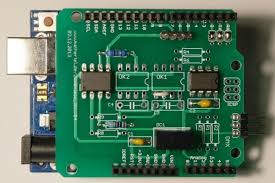Car park line marking is an essential aspect of any parking facility, as it helps in maintaining order and ensuring the efficient use of space. Proper line marking can also improve safety and reduce the risk of accidents. But how do you ensure that your car park line marking is up to standard? What are the key considerations to keep in mind when designing and implementing a car park layout?
Selecting the right paint and equipment to understanding the regulations and best practices that govern car park design:
1. Understanding Car Park Line Marking Regulations and Standards
Before embarking on any car park line marking project, it’s essential to familiarize yourself with the relevant regulations and standards. These guidelines vary depending on your location, but generally cover aspects such as the minimum size of parking bays, the width of access lanes, and the positioning of disabled parking spaces. Compliance with these regulations not only ensures the safety and accessibility of your car park but can also help you avoid fines or legal issues.
Some key standards to consider include the American with Disabilities Act (ADA), which outlines requirements for accessible parking spaces in the United States, and the Australian/New Zealand Standard AS/NZS 2890.1:2004, which covers off-street car parking facilities. Be sure to consult your local authorities for specific regulations applicable to your area.
2. Choosing the Right Line Marking Paint
The type of line marking paint you choose can have a significant impact on the longevity and effectiveness of your car park markings. There are several types of paint available, each with its own set of advantages and disadvantages:
– Water-based acrylic paint: This eco-friendly option is easy to apply and dries quickly, making it a popular choice for car park line marking. However, it may not be as durable as other options, particularly in high-traffic areas.
– Solvent-based paint: This type of paint is known for its durability and resistance to wear, making it a good choice for busy car parks. However, it can be more challenging to apply and may have a stronger odor than water-based alternatives.
– Preformed thermoplastic: This material is applied using heat and provides a highly durable, long-lasting line marking solution. However, it can be more expensive and requires specialized equipment to install.
When selecting your line marking paint, consider factors such as your budget, the expected traffic levels in your car park, and any environmental concerns.
3. Car Park Layout and Design Considerations
A well-designed car park layout is crucial for maximizing space efficiency and ensuring the smooth flow of traffic. Some key design considerations include:
– The number of parking spaces required: This will depend on factors such as the size of your car park and the expected demand for parking.
– Access lanes: Ensure that your access lanes are wide enough to accommodate the types of vehicles that will be using your car park.
– Pedestrian access: Consider the placement of pedestrian walkways and crossings to ensure the safety of all users.
– Signage: Clear and visible signage is essential for directing traffic and indicating parking restrictions.
– Lighting: Adequate lighting is crucial for both safety and visibility, particularly in larger or multi-level car parks.
4. Parking Bay Dimensions and Spacing
Standard parking bay dimensions vary depending on the type of vehicle being accommodated and the local regulations in your area. In general, a standard parking space for a passenger vehicle should measure approximately 2.4 meters wide by 4.8 meters long. For disabled parking spaces, the dimensions may be larger to accommodate wheelchair access.
When determining the spacing between parking bays, consider factors such as the width of your access lanes and the turning radius required for vehicles to maneuver in and out of spaces. Be sure to consult your local regulations for specific requirements.
5. Selecting the Right Line Marking Equipment
The type of line marking equipment you choose will depend on factors such as the size of your car park and the type of paint being used. Some common options include:
– Handheld applicators: These are ideal for small-scale projects or touch-ups, as they are relatively inexpensive and easy to use.
– Line marking machines: These devices allow for more precise and efficient application of paint, particularly over large areas. They can be either manual or powered and are available in various sizes and configurations.
– Thermoplastic applicators: These specialized machines are designed for applying preformed thermoplastic line markings and require a source of heat to operate.
6. Applying Line Markings: Techniques and Best Practices
When applying car park line markings, it’s essential to follow best practices to ensure a professional and long-lasting result. Some tips for successful line marking application include:
– Surface preparation: Ensure that the surface is clean, dry, and free of debris before applying paint.
– Weather conditions: Avoid applying line markings in extreme temperatures or during wet or windy conditions, as this can affect the paint’s adhesion and drying time.
– Straight lines: Use a chalk line or string line to guide the application of straight lines.
– Stencils: Use stencils for consistent and professional-looking symbols, such as disabled parking symbols or directional arrows.
7. Thermoplastic Line Marking: A Durable Alternative
Thermoplastic line marking is a popular alternative to traditional paint, offering increased durability and resistance to wear. This material is applied using heat, causing it to bond with the surface and create a long-lasting, highly visible line marking. While thermoplastic line marking can be more expensive than paint, its longevity and low maintenance requirements can make it a cost-effective solution in the long run.
8. Maintaining and Updating Car Park Line Markings
Regular maintenance is crucial for keeping your car park line markings in good condition and ensuring the safety and efficiency of your facility. Some maintenance tasks to consider include:
– Regular inspections: Check your line markings for signs of wear or damage and make any necessary repairs or touch-ups.
– Cleaning: Keep your car park surface clean and free of debris to prolong the life of your line markings.
– Updating: Update your line markings as required to reflect changes in regulations or car park layout.
Conclusion
Car park line marking is an essential aspect of any parking facility, with the potential to improve safety, efficiency, and user satisfaction. By understanding the regulations and best practices governing car park design and line marking, and by selecting the right materials and equipment, you can create a well-organized and professional-looking car park that meets the needs of your users.




